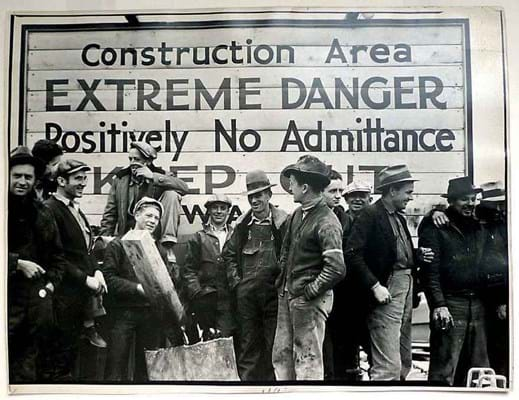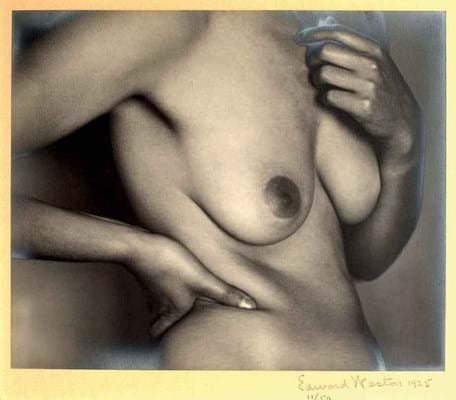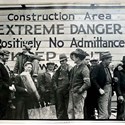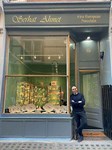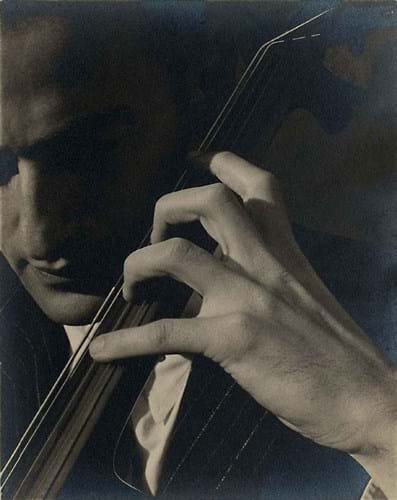
Breaking Away: Modernism in Photography Since World War I, runs at the Mayfair gallery of Richard Nagy until March 27.
Edward Weston’s (1886-1958) geometric and abstract image, Nude (Miriam Lerner), which Shapiro selects as a favourite work in the show, underlines the move away from Pictorialism and sentimentality of earlier photographs.
“It is an extremely avant-garde ‘portrait’ in the sense that it is an intimate, close-up of a woman’s nude torso – that alone is incredibly rare for the period,” says Shapiro.
But he is also drawn to the physical material of the work, offered for a price in the region of $1m. “It is one of the most beautiful photographic objects I have ever seen. The photographic paper from the 1920s has astonishing warmth and depth.”
Radical but vintage style
The ‘vintage’ style of many of these works was radical at the time.
“The early Modernist photographers were emphatic about the fact that the camera could make pictures unlike any other medium, that it should stand on its own as a medium and no longer imitate Impressionist painting,” Shapiro says.
This show features some of the best-known and most sought-after names of the 1920s-60s, though Shapiro has a particular fondness for Weston’s group of Californian photographers (including Imogen Cunningham, Consuelo Kanaga and Ansel Adams, all featured in the show).
They were, he says, “beginning to display their radical political positions as well – this is a Modernist characteristic, as in honest portraits of people in troubling times”.
In the area of social documentary images are Depression-era photos such as Workers, Grand Coulee Dam, Columbia Basin Project, Washington State (1937) by Margaret Bourke- White. It depicts a crowd of cheerful-looking workers gathered in front of a billboard. There are more Depression-era scenes from Dorothea Lange and sympathetic portraits of African-American sitters by Kanaga.
New depictions of the human body were also important for the Modernists. As well as erotically charged images of the female form (Man Ray’s portrait of Lee Miller, Neck, for example), in Cunningham’s Gerald Warburg, Cellist (1929), the musician’s hand is tightly framed as the main subject.
Also on offer are rare images of London by American photographer Robert Frank, expansive natural vistas by Adams and more by Paul Strand and Bill Brandt.
The show marks Shapiro’s 40th anniversary in the business (officially in January) but his first venture in the UK. It is a chance, according to the Connecticut-based dealer, to get a feel for the British market and its collectors.
“I have never had any sort of presence in London nor have I ever participated in a London art fair,” he says. “This exhibition at Richard Nagy’s gallery is an excellent opportunity for me to learn more about photography collectors in the UK.”
Part of his early training took place at Sotheby’s Works of Art Course in 1977-78, where he met Nagy, now an art dealer. Friends for more than 42 years, the pair share a love of Modernist art of the inter-war period – and Nagy has made the occasional purchase from Shapiro.


